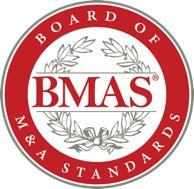Perfecting Your M&A Game
By Ellen Owens, VP of Global PMO at Avnet and a member of the Board of M&A Standards
Muscle memory is simply defined as the ability to carry out a specific motion without really thinking about it or trying. Building it requires repetition of a motion when done correctly, and feedback when the motion is not performed correctly. For athletes, muscle memory is a key in developing critical skills that rely on precise movements. For example, a golfer relies on muscle memory to strike the ball each time with precision to place it close to the pin. The golfer who wants to perfect putting, will putt the ball over and over using the correct stance, grip and swing, and will likely have a coach or a caddie to provide feedback. Developing muscle memory can make the difference between winning the tournament or losing it by a matter of strokes.
This phenomenon has applications beyond professional sports – playing a guitar, typing or riding a bike., for example. And the same principles can be applied to learning.
The theories of M&A can be learned by reading or taking a class, but the real learning begins as you put into practice the theories and techniques learned. Unless you work for a company that is highly acquisitive, the opportunity to apply the knowledge on a frequent basis can be challenging. M&A Programs are more than just a playbook – they operationalize and formalize the playbook that will drive discipline to the process and look for innovative training opportunities for M&A teams on a regular basis to develop that muscle memory.
If your organization is looking to develop that M&A muscle memory, program managers should consider an approach similar to a golfer trying to perfect their putt.
Repetition, doing the right thing over and over
Some companies are more acquisitive than others, so it may seem an unfair advantage for those highly acquisitive companies to gain more practice time. I would argue that an actual acquisition is not the time to practice. So how should your team get that practice?
One way is to take advantage of training and learning opportunities. Focused training on a specific stage of an acquisition or integration can generate ideas around how to improve your current practice and gain insights from others who may be more acquisitive.
Simulations or tabletop exercises can be conducted by presenting a case study or fake company. This gives an opportunity to the M&A team to consider how they might approach the deal from due diligence through integration planning. Simulations are an often overlooked option in business, primarily because time, however invested, can pay dividends by uncovering potential gaps in the process that may otherwise be missed.
How do you know if you are doing the right thing? A well-established M&A Program is key to ensuring that the process, playbook and policies are documented so that when followed, the team will be doing the “right thing.” The playbook and documented processes should be updated and followed consistently, deal after deal.
An M&A Program Office may not be a fully staffed business unit within an organization. If a company acquires one to two companies per year, the Program Office may sit as a part of another functional group. That said, the responsibility of program oversight should be regular and well managed, rather than run as an ad-hoc activity.
Seek feedback from an advisor
Program managers who have benefitted from conducting numerous integrations can rely on lessons learned and best practices. For companies who do not have the benefit of a long history of successful acquisition and integration, it is beneficial to seek the advice of a professional. A professional advisor who has benefitted from years of experience acquiring and integrating can assess program readiness and capability, facilitate executive planning sessions, and assist in developing or evaluating integration plans. Advisors should also work with internal leaders to provide guidance and feedback that will prepare them for the next transaction.
Conclusion
Getting the most from acquisitions requires a well-established M&A program that has oversight to processes, playbook and policies, which should be employed for every acquisition, every time. Developing a high level of maturity in M&A requires repetition and practice. Consider unique and nontraditional ways to provide key members of the M&A and acquisition teams with experience and training outside of an actual transaction or deal. If your M&A team lacks the depth of experience, consider hiring a professional advisor who can provide valuable feedback on your program and playbook. Consistently following a well-designed M&A playbook and processes will help to develop that M&A muscle memory and increase the likelihood that you will hit a hole in one and take home the prize.
 About Ellen:
About Ellen:
Ellen Owens is the VP of Global PMO at Avnet, a global electronics company with abilities that can support customer from concept through creation and design to distribution. In her current role, she leads highly collaborative global business transformation initiatives that result in growth opportunities, cost savings, and process efficiencies. Most notably, Ellen served as the global lead for the divestiture of a significant portion of the Avnet business in 2016-17. Ellen is a featured presenter at the M&A Leadership Council's The Art of M&A Program Management in San Diego October 2019. This updated training event is designed especially for integration program and project managers and offers a hands-on, tactical approach to managing the life cycle of M&A integrations, complete with blueprints, tools and techniques for success.

